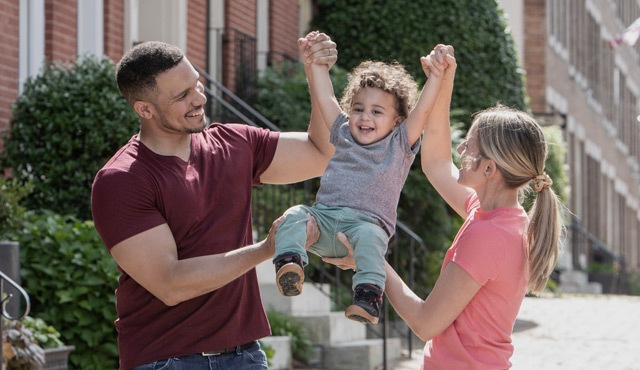Polio is a disabling disease caused by a virus. It most commonly spreads when someone who has polio doesn't wash their hands properly after going to the bathroom and then touches food or objects. If a person who is unvaccinated touches that food or object, they can become infected with polio. It can also be spread when someone with polio coughs or sneezes on food or objects that unvaccinated people touch. Although many people who get polio will have no or mild flu-like symptoms, the disease can affect the brain and cause serious—and permanent—complications, like paresthesia (feeling pins and needles), meningitis (swelling of the lining of the brain and spinal cord), or paralysis (not being able to move).source: 1
The inactivated poliovirus vaccine (IPV) is the only polio vaccine recommended in the United States since 2000.source: 2 There are several combination vaccines that also include IPVsource: 3:
- DTaP-IPV
- DTaP-HBV-IPV
- DTaP-IPV-Hib-HBV
- DTaP-IPV-Hib
If someone was vaccinated outside of the United States, they may have been given the oral poliovirus vaccine (OPV). If your child received any polio vaccine as oral drops, they may still need to get the IPV type of the polio vaccine.source: 4
Why does my child need to be vaccinated against polio?
Polio is very contagious. For every one child paralyzed by polio, there are 200–2,000 children infected who show no symptoms.source: 5 However, these children can still spread the disease to others. In severe cases, polio can cause nerve injury. This can lead to paralysis, difficulty breathing, and death.
Polio is rare in the United States, but it still exists in a few countries in Asia and Africa. People can get polio when they travel—and when they get home, they can spread it to people who are unvaccinated. The 2022 case in New York occurred this way.source: 6
How safe are the vaccines?
The vaccines that prevent polio are safe. They have not been shown to cause any serious problems, and if side effects occur, they are generally mild.source: 2 Like any medicine, there's a small chance that a vaccine given to prevent polio could cause other serious reactions. However, getting vaccinated to prevent polio is much safer than getting polio.

How effective are the vaccines?
The IPV vaccine is 90% effective after 2 doses and at least 99% effective after 3 doses.source: 2,source: 7
What are the vaccines’ side effects?
Any side effects are usually mild and go away in a few days. The most common side effect is soreness where the vaccine was given.source: 2
Understanding the Risks
Getting Polio vs. Getting Vaccinated
Polio
Vaccines to prevent Polio
Common: Mild to Moderate Symptoms or Side Effects
Most children have no symptoms but can pass the virus on to others. Also, 1 out of 4 children have flu-like symptoms for 2–5 days. These can include:
- Sore throat
- Fever
- Tiredness
- Nausea
- Headache
- Stomach pain
If side effects occur, they are usually mild and last 1–2 days:
- Soreness or redness where the vaccine was given
Rare: More Serious Symptoms, Complications or Side Effects
- Meningitis
- Paralysis
- Paresthesia (feeling pins and needles)
- Severe allergic reaction (generally, for every 1 million vaccines administered in the United States, only about 1–2 doses results in a severe allergic reaction)
Knowing that my child is protected against deadly diseases gives me peace and comfort.
When does my child need the vaccines?
All kids need 4 doses of an IPV vaccine as part of their routine vaccine schedule. Children who are not caught up can get their second dose 28 days after the first dose. Kids can get a vaccine to prevent polio at the same time as other vaccines.source: 8
- First Dose
-
2 months
- Second Dose
-
4 months
- Third Dose
-
between 6 and 18 months
- Fourth Dose
-
between 4 and 6 years
More information
- Learn what other vaccines might be given at the same time as the polio vaccine.
Learn more:
Sources
- CDC: About Polio in the United States
- CDC: Polio Vaccination
- CDC: Combination Vaccines
- CDC: Routine Polio Vaccination
- CDC: Poliomyelitis
- CDC: Public Health Response to a Case of Paralytic Poliomyelitis in an Unvaccinated Person and Detection of Poliovirus in Wastewater — New York, June–August 2022
- CDC: Polio Vaccine Effectiveness and Duration of Protection
- CDC: Polio Vaccine Information Statement
Disclaimer Policy: Links with this icon () mean that you are leaving the HHS website.
Disclaimer Policy: Links with this icon () mean that you are leaving the HHS website.
- The Department of Health and Human Services (HHS) cannot guarantee the accuracy of a non-federal website.
- Linking to a non-federal website does not mean that HHS or its employees endorse the sponsors, information, or products presented on the website. HHS links outside of itself to provide you with further information.
- You will be bound by the destination website's privacy policy and/or terms of service when you follow the link.
- HHS is not responsible for Section 508 compliance (accessibility) on private websites.
- For more information on HHS's web notification policies, see Website Disclaimers.
